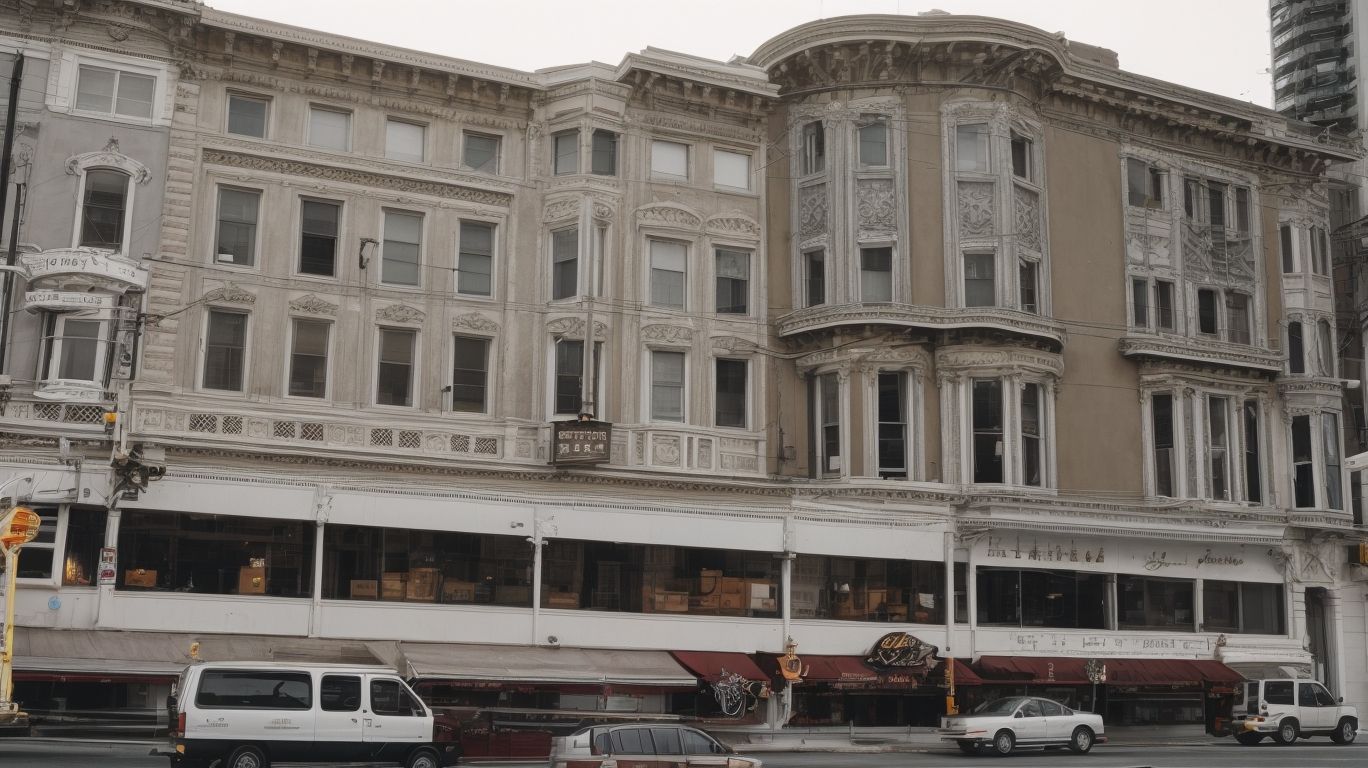
The Importance of Soft-Story Retrofit Services in SF
Soft-story retrofitting has become a crucial topic of discussion in San Francisco due to the city’s high seismic hazard. But what exactly is soft-story retrofitting, and why is it so important?
In this article, we will explore the seismic hazard in San Francisco and the concept of soft-story buildings. We will also discuss the benefits of retrofitting and delve into the specific requirements for soft-story retrofitting in SF.
Additionally, we will cover how to determine if your building needs retrofitting and the step-by-step process of retrofitting. If you own or occupy a building in San Francisco, this is essential information that you won’t want to miss.
What is Soft-Story Retrofitting?
Soft-story retrofitting involves the modification and reinforcement of buildings, particularly those with open first floors (such as parking spaces) that are weaker and more susceptible to collapse during an earthquake.
This construction method typically includes adding additional support elements, such as braces, shear walls, or moment frames, to enhance the building’s overall structural integrity.
By doing so, the building’s capacity to withstand seismic forces is significantly increased, reducing the risk of structural failure and potential harm to occupants.
The engineering design employed in these retrofits takes into account the specific vulnerabilities of soft-story buildings, aiming to bring them up to current building safety standards and codes for seismic resistance.
Why is Soft-Story Retrofitting Important in San Francisco?
Soft-story retrofitting holds immense importance in San Francisco due to its high seismic activity and the presence of numerous soft-story buildings throughout the city, posing significant risks to building safety and structural integrity during earthquakes.
The process of soft-story retrofitting is crucial for enhancing the resilience of buildings, particularly in areas prone to seismic hazards like San Francisco. By reinforcing the lower stories of these buildings, the retrofitting measures mitigate the risk of collapse and structural damage, thereby safeguarding lives and property.
Compliance with seismic retrofit regulations is essential to ensure that buildings meet the required safety standards, ultimately contributing to the overall seismic resilience of the city’s infrastructure.
What is the Seismic Hazard in San Francisco?
San Francisco faces a high level of seismic hazard, characterized by the potential for significant earthquake-related risks and building damage. This has led to stringent regulations and codes for structural standards and risk reduction measures.
With a history of enduring devastating earthquakes, including the 1906 Great San Francisco earthquake with a magnitude of 7.9, the city has implemented measures to enhance building stability. These events highlighted the vulnerability of buildings to seismic activity and the need for proactive measures.
The regulatory framework in San Francisco prioritizes the use of modern seismic design principles and retrofitting techniques to mitigate potential damage. This approach aims to reduce the city’s seismic risk and ensure the resilience of its infrastructure in the face of future seismic events.
What is a Soft-Story Building?
A soft-story building is a multi-story structure with a weaker or more flexible first floor, typically characterized by open spaces, such as parking areas or storefronts, that can lead to structural collapse and increased vulnerability during seismic activity.
During an earthquake, the upper floors of a soft-story building can exert heavy forces on the weak ground story, leading to potential collapse. The inherent instability of these structures puts them at a higher risk compared to other building types.
To address this vulnerability, retrofitting measures such as adding shear walls, braces, or other reinforcement techniques are essential to improve their seismic performance and reduce the risk of catastrophic failure.
What are the Benefits of Soft-Story Retrofitting?
Soft-story retrofitting offers several key benefits, including increased structural stability, reduced risk of collapse, improved safety for occupants, and the protection of property value. This makes it an essential practice for building owners and property managers in high-seismic areas.
These improvements are crucial in mitigating the potential aftermath of seismic events. Soft-story retrofitting enhances a building’s ability to withstand the impact of earthquakes and other natural disasters by reinforcing vulnerable structural elements, such as open parking or commercial spaces. This process significantly reduces the likelihood of building collapse and the associated hazards, thus safeguarding the lives and well-being of occupants and neighboring communities.
Integrating these enhancements contributes to the overall resilience of the building, providing long-term peace of mind for all stakeholders.
Increased Structural Stability
Soft-story retrofitting significantly enhances the structural stability of buildings, improving their seismic performance and strengthening key structural elements to withstand the forces exerted during earthquakes.
This type of retrofitting involves various techniques such as adding shear walls, installing moment-resisting frames, and reinforcing existing columns and beams. By incorporating these methods, buildings can better comply with building codes and regulations, ensuring a higher level of seismic design provisions.
The goal is to minimize potential damage and protect the occupants and contents within the structure during seismic events, ultimately contributing to overall structural mitigation efforts.
Reduced Risk of Collapse
Soft-story retrofitting effectively reduces the risk of building collapse by addressing structural deficiencies and providing viable retrofit options that enhance the overall resilience of the structure.
Soft-story retrofitting involves a detailed structural evaluation to identify any weaknesses or deficiencies in the building’s design. This evaluation includes assessing the existing framing, connections, and load-bearing elements to determine necessary retrofit solutions.
Engineering experts often recommend implementing building reinforcement techniques like adding steel frames, installing shear walls, or strengthening existing columns and foundations to improve the building’s ability to withstand seismic forces and prevent collapse. By integrating these retrofit options, soft-story buildings can significantly enhance their structural integrity and ensure a safer environment for occupants.
Improved Safety for Occupants
Soft-story retrofitting prioritizes the safety of occupants by aligning the building with established seismic design standards, ensuring a higher level of protection and structural integrity during seismic activity.
This process involves reinforcing the lower levels of buildings, particularly those with open spaces like parking garages, to mitigate the risk of collapse during seismic events.
By complying with building safety standards, property owners can contribute to reducing the potential for injury and loss of life, as well as minimizing the costs associated with extensive structural repairs in the aftermath of earthquakes.
The structural enhancements resulting from soft-story retrofitting play a crucial role in promoting a safer environment for building occupants and the surrounding community.
Protection of Property Value
Soft-story retrofitting safeguards the property value by fortifying the building against seismic hazards, ensuring that the investment retains its structural integrity and appeal through the application of advanced retrofitting processes and construction techniques.
This proactive approach to retrofitting not only enhances the structural resilience of the building but also contributes to its market value by addressing retrofit requirements with precision and using high-quality building materials.
Incorporating innovative construction methods allows for seamless integration of retrofit elements without compromising the architectural aesthetic, further bolstering the property’s desirability. As a result, soft-story retrofitting becomes an investment in both safety and long-term value, providing peace of mind to property owners and maintaining the economic viability of the building.
What are the Requirements for Soft-Story Retrofitting in SF?
San Francisco imposes specific requirements for soft-story retrofitting, including a mandatory retrofit ordinance, a timeline for compliance, and the adherence to engineering and construction standards to ensure the structural integrity and safety of buildings.
Property owners are obligated to comply with the mandatory retrofit ordinance, which outlines the retrofit requirements for vulnerable buildings. The compliance timeline is crucial, as it dictates the deadlines for property owners to complete the necessary retrofit work.
The prescribed engineering and construction standards aim to guarantee that the retrofitting process meets the city’s stringent safety regulations. The permit process and construction regulations play a significant role in ensuring that the retrofitting projects adhere to the necessary code compliance and quality standards.
Mandatory Retrofit Ordinance
San Francisco’s mandatory retrofit ordinance mandates building owners to initiate the permit process for soft-story retrofitting within specified timelines, ensuring the timely implementation of structural upgrades to enhance building resilience.
Upon being notified of their building’s requirement for retrofitting, owners are responsible for submitting a permit application to the city’s Department of Building Inspection. The process involves providing detailed plans and engineering calculations for the proposed retrofit work.
Once the permit is approved, building owners must adhere to the regulatory requirements for initiating the retrofit, coordinating with qualified contractors and engineers to ensure compliance with the city’s standards for seismic strengthening. The ordinance aims to bolster the city’s building stock against seismic hazards, safeguarding occupants and the community at large.
Timeline for Compliance
Building owners in San Francisco are required to comply with specified timelines for seismic retrofit projects, as outlined by the city’s code compliance regulations, ensuring swift and effective implementation of necessary structural upgrades.
The timeline requirements for compliance with soft-story retrofitting in San Francisco are essential for maintaining the city’s structural resilience and ensuring the safety of its inhabitants.
The city’s stringent building codes emphasize the imperative for building owners to adhere to prescribed deadlines, fostering a proactive approach to seismic retrofit projects. Meeting retrofit requirements within the stipulated timelines is crucial for minimizing vulnerability to seismic hazards and upholding the integrity of the built environment in San Francisco.
Required Engineering and Construction Standards
Soft-story retrofitting in San Francisco necessitates strict adherence to established engineering and construction standards. This ensures the proper implementation of structural upgrades and enhancements to meet the city’s safety and resilience requirements.
This includes conformity with the city’s building codes and regulations, as well as the utilization of advanced structural engineering techniques to fortify the existing soft-story buildings. The engineering standards encompass seismic retrofitting measures, such as reinforcing the building’s foundation, adding lateral bracing, and enhancing the structural integrity of the vulnerable stories.
Compliance with these crucial requirements is essential to mitigate the risk of structural failure during seismic events and enhance the overall safety and stability of soft-story structures in San Francisco.
How Do You Know if Your Building Needs Soft-Story Retrofitting?
Determining the need for soft-story retrofitting involves assessing the age of the building, its location in San Francisco, and identifying any structural vulnerabilities that warrant compliance with retrofit requirements and seismic design considerations.
This evaluation process requires a thorough inspection of the building’s maintenance history, foundation reinforcement, and susceptibility to seismic activity.
The age of the structure is crucial, as older buildings often lack the necessary reinforcement against lateral forces. The building’s location in a high-seismic zone like San Francisco significantly impacts the retrofitting decision. Understanding the interplay of these factors is essential for ensuring the structural resilience and safety of the building and its occupants.
Age of Building
The age of the building is a crucial factor in determining the need for soft-story retrofitting. Older structures may require specific structural enhancements to ensure their stability and resilience in the face of seismic hazards.
Understanding the building’s age allows for a comprehensive assessment of the structural improvements necessary to bring the property up to current safety standards. This can involve reinforcing weak or flexible areas such as open-front ground levels, incorporating steel moment frames, or installing shear walls to enhance the building’s stability.
By addressing these vulnerabilities, older buildings can be strengthened to better withstand the impact of earthquakes and maintain the safety of occupants and surrounding areas.
Location in SF
The location of a building in San Francisco plays a significant role in determining the seismic activity it may be exposed to. This necessitates compliance with specific building regulations and retrofit requirements based on the seismic hazard level in the area.
The seismic hazard in San Francisco is notably high due to its proximity to the Pacific Ring of Fire. This means that buildings in the area are at an increased risk of damage from earthquakes. As a result, San Francisco has implemented stringent building codes and regulations focused on seismic retrofitting to ensure the structural integrity of buildings during earthquakes. Soft-story retrofitting has become a crucial aspect of building maintenance, particularly in older buildings with weaker structural support, to mitigate the risk of collapse during seismic events.
Structural Vulnerabilities
Identifying structural vulnerabilities in a building is critical for assessing the need for soft-story retrofitting, as it directly impacts the building’s design, seismic performance, and the potential risks posed during earthquakes.
This process involves evaluating the building’s structural elements, such as load-bearing walls, foundation strength, and the configuration of open spaces, to pinpoint areas of weakness. Understanding these vulnerabilities is essential for determining the most effective retrofitting strategies to enhance the building’s ability to withstand seismic forces and minimize potential damage.
By addressing these structural vulnerabilities, the overall risk of collapse or damage during an earthquake can be significantly reduced, contributing to the greater resilience and safety of the building and its occupants. Consequently, proactive identification and mitigation of structural vulnerabilities support the imperative for risk reduction and the promotion of building resilience in seismic-prone regions.
What is the Process for Soft-Story Retrofitting?
The process for soft-story retrofitting involves a series of essential steps, including structural assessment and design, permitting and approval, and the subsequent construction and inspection phases to ensure code compliance and structural enhancements.
During the structural assessment and design phase, engineers evaluate the building’s current weaknesses and develop retrofit plans to strengthen its soft-story elements.
Once the plans are finalized, the permitting and approval stage begins, where the necessary documents are submitted to regulatory authorities for review. Upon obtaining the required permits, the construction process commences, employing specialized techniques such as moment frames, shear walls, or steel bracings.
Following the construction, thorough building inspections are conducted to verify compliance with retrofit requirements and ensure the structural integrity of the building.
Structural Assessment and Design
The initial phase of soft-story retrofitting involves comprehensive structural assessment and design, encompassing structural analysis, adherence to building standards, and thorough risk assessment to formulate the retrofit strategies.
This process is vital in identifying the structural weaknesses, such as inadequate lateral load resistance, that are often present in soft-story buildings.
Engineers meticulously evaluate the building’s existing structural components and analyze potential risks posed by seismic events, calculating factors like building drift and potential for collapse.
Compliance with building codes and standards is essential, ensuring that any structural upgrades and reinforcements align with the latest regulations.
By integrating these critical aspects into the retrofit design, the overall building resilience is significantly improved, reducing the risk of structural failure during seismic events.
Permitting and Approval
The permitting and approval stage of soft-story retrofitting encompasses the necessary processes for obtaining permits, ensuring compliance with building codes, and incorporating seismic design considerations to meet the regulatory standards.
This crucial phase involves initial site assessments to determine the specific retrofit requirements. This includes evaluating building materials, structural integrity, and construction methods. The goal is to create a comprehensive plan for the retrofit.
Building owners and project managers must collaborate closely with structural engineers and architects. This ensures that the proposed retrofit strategies align with seismic design principles and comply with local building regulations. Obtaining permits and approvals is crucial for a smooth and successful implementation of the soft-story retrofitting project.
Construction and Inspection
The final phases of soft-story retrofitting encompass the construction process and subsequent inspection, ensuring the implementation of structural enhancements to enhance building stability and resilience against potential seismic activity.
During construction, various techniques are employed to reinforce the soft-story building. This includes adding shear walls, installing moment frames, and using steel bracings. These methods significantly improve the building’s ability to withstand lateral forces, thereby increasing its overall stability.
Once the construction is completed, thorough inspections are conducted to verify that the retrofit measures have been implemented correctly and meet the necessary standards. This meticulous approach ensures that the building is adequately prepared to mitigate the risks associated with seismic events, enhancing its safety and durability.




No Comments